Page 2
Practicing Environmental Stewardship
Help against Deforestation
The Japan Aerospace Exploration Agency (JAXA) and JICA have worked together closely since 2014 under a wide-ranging cooperation agreement. They mobilize diverse technologies and organizational capabilities in addressing regional development issues and issues of global concern, such as global warming and threats to biodiversity.
In one notable project, JAXA and JICA work with heavily forested nations to protect sylvan resources. They monitor tropical forests with observation satellites and detect and summon responses to suspected illegal logging through their JICA-JAXA Forest Early Warning System in the Tropics (JJ-FAST). JAXA and JICA accompany JJ-FAST with training programs that impart pertinent skills to government personnel in the participating nations, with the dissemination of useful information on best practice in forest governance, and with the convening of regional conferences and seminars.
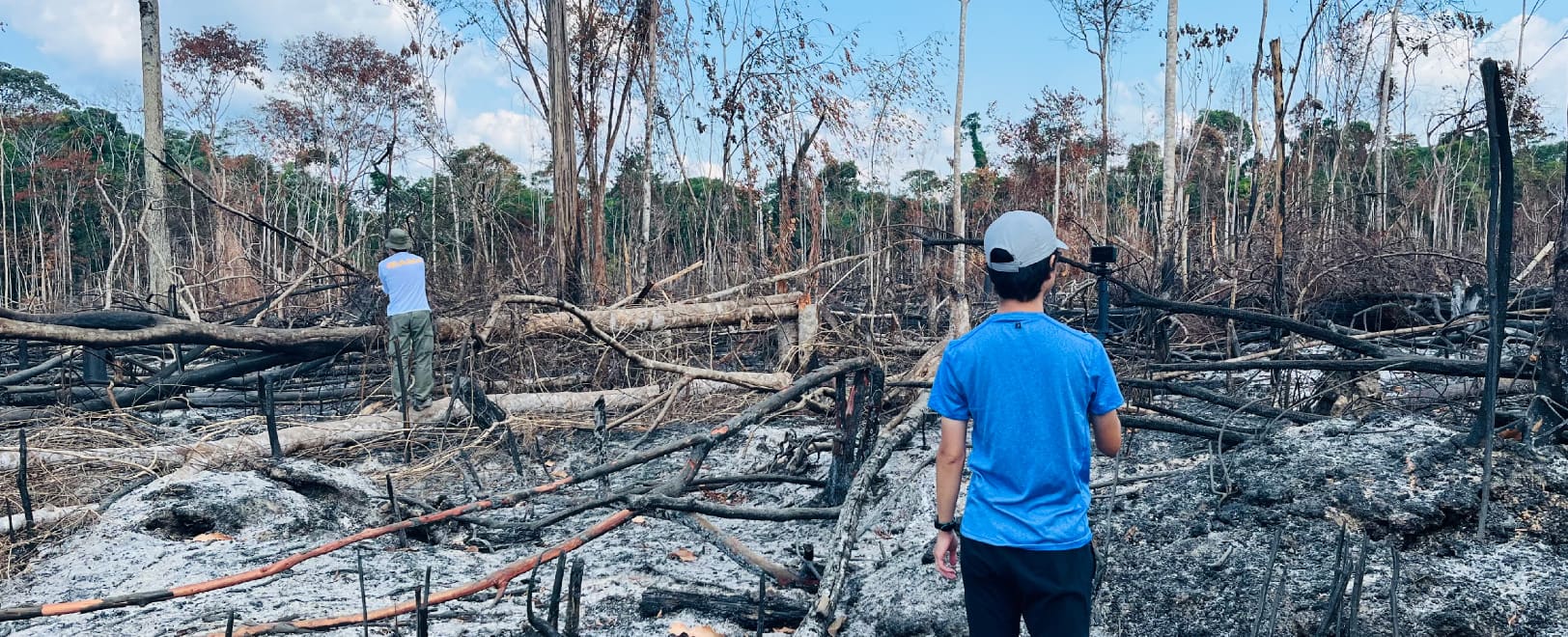
The aftermath of illegal deforestation
A Boost for Agricultural Productivity, too
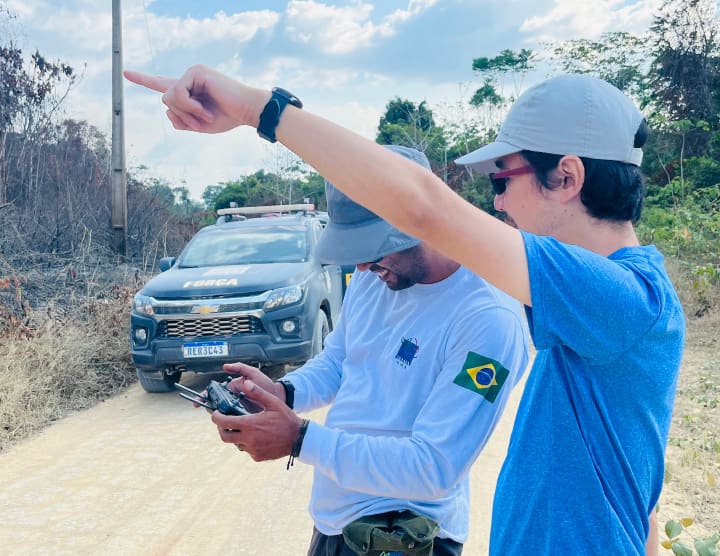
A JICA specialist coordinating with a representative of a project partner
JJ-FAST serves 78 nations. That includes working with authorities in the nine Central American nations of Belize, Costa Rica, El Salvador, Guatemala, Honduras, Mexico, Nicaragua, Panama, and Trinidad and Tobago and in the nine South American nations of Bolivia, Brazil, Colombia, Ecuador, Guyana, Paraguay, Peru, Suriname, and Venezuela.
In Brazil, JJ-FAST deploys advanced radar-satellite and artificial-intelligence technology to help the Brazilian Institute of the Environment and Renewable Natural Resources (IBAMA) prevent illegal deforestation in the Amazon basin. It detects deforestation, for example, during times of heavy cloud and smoke cover, when the deforestation would be optically undetectable.
JICA also supports Paraguay’s space agency, the Agencia Espacial del Paraguay (AEP). It is helping the agency leverage space technology in raising productivity in agriculture and animal husbandry and in analyzing the risks associated with natural disasters and formulating effective responses.
Greenhouse Gas Reduction with Rotor Sails
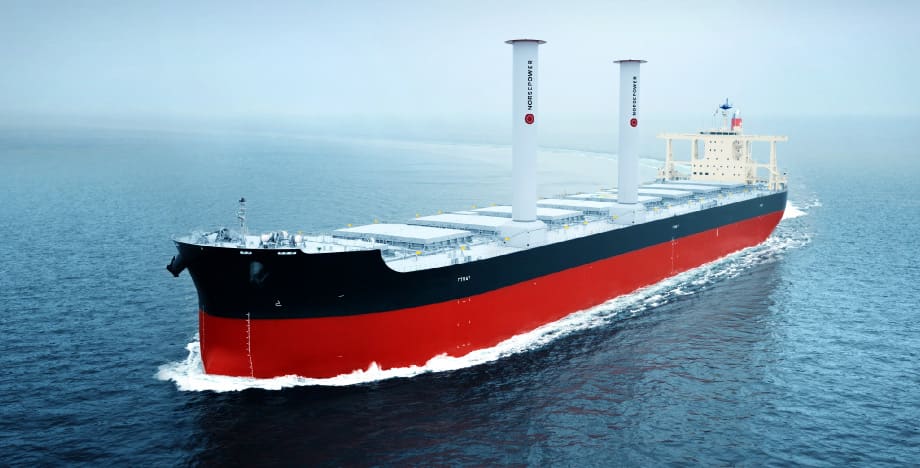
Computer rendering of MOL bulk carrier with Norsepower Rotor Sails
The Japan-headquartered shipping company Mitsui O.S.K. Lines (MOL) and the Brazil-headquartered mining company Vale are about to deploy an exciting new possibility in clean transport. They are retrofitting a cargo vessel with a new-old technology to reduce emissions of greenhouse gases at sea. The vessel is a 200,000-ton class bulk carrier owned by MOL and chartered by Vale under a midterm contract to carry iron ore. MOL and Vale have commissioned Finland’s Norsepower to outfit the vessel with two 35-meter-by-5-meter Norsepower Rotor Sails. Plans call for the installation of the Rotor Sails to take place in the first half of 2024.
Rotor Sails use the Magnus effect to contribute to vessel propulsion. Drawing wind into the spinning rotors creates a pressure differential between opposite sides of the rotors. Combining that effect with voyage optimization can reduce the vessel’s fuel consumption and greenhouse gas emissions between 6% and 10%.
MOL and Vale have a strong working relationship based on trust born of fulfilling transport contracts, and both companies are industry leaders in initiatives for reducing emissions of greenhouse gases. The former is working under its MOL Group Environmental Vision to achieve net-zero emissions of greenhouse gases by 2050 and to reduce its emissions intensity 45% by 2035, compared with 2019, as a midterm goal. Vale, meanwhile, is working to reduce its greenhouse gas emissions in transport operations 15% by 2035, compared with 2018.
Supervising the project for MOL is Ryu Kyo, of the company’s Headquarters of Dry Bulk Business “I struggled to believe that those cylindrical units could generate propulsion,” confesses Ryu, “until I boarded a similarly equipped vessel. But seeing the Rotor Sails in operation and hearing from crew members who had worked with them was convincing. I finally realized that this technology would make a real contribution to reducing greenhouse gas emissions. Now, I’m excited about putting our Rotor Sail–equipped vessel into operation. I’m proud to have been able to play a part in achieving an important environmental target.”
A Proud South American History
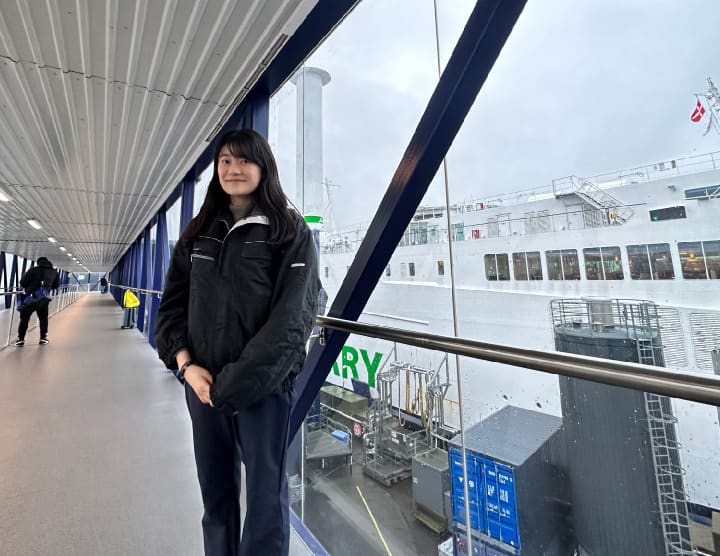
MOL’s Ryu Kyo before boarding a Rotor Sail–fitted vessel
MOL has been serving customers worldwide with reliable ocean transport for more than 140 years. Its ties with Brazil go back 115 years, to when the first Japanese immigrants traveled to that nation. Those immigrants arrived in Brazil’s Port of Santos in 1908 on the Kasato-maru, a vessel intertwined in MOL history. Since then, Brazilian-MOL ties have deepened steadily and have broadened beyond marine transport.
A recent example of diversified MOL activity in Brazil is the deployment of floating production, storage, and offloading units for offshore oil development. In addition, MOL operates shuttle tankers to transfer oil from the floating units to onshore oil refineries and cargo transfer vessels to move the crude oil directly from the floating units to oceangoing tankers. It also operates subsea support vessels in Brazil to install, maintain, and remove seabed equipment.
“Promoting the usage of renewable energies is increasingly important,” observes Ryu, “in reducing emissions of greenhouse gases. We at MOL will continue tackling advances in cleaner propulsion in our established shipping operations. At the same time, we will prepare to undertake clean energy development in peripheral sectors. We note that South America, with its vast landmass and natural conditions conducive to solar power and wind power generation, has especially interesting potential.”
Optimizing Resource Utilization
Brazil is a staging ground for an interesting facet of Toyota Motor Corporation’s product strategy. Toyota famously launched the world’s first gasoline-electric hybrid car capable of carrying multiple passengers, the Prius, in 1997. It has continued to promote hybrid power in the face of growing global demand for battery-electric vehicles.
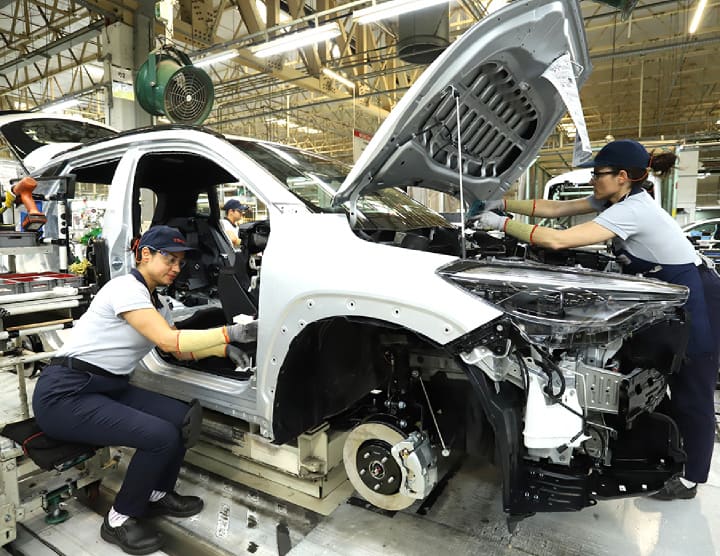
Inside Toyota do Brasil’s Sorocaba Plant
Toyota’s senior executives have argued that hybrid remains, for the time being, the most environmentally benign powertrain technology. They have hedged their bet on hybrid, to be sure, with heavy investment in developing and manufacturing battery-electric vehicles, but they continue to evangelize for hybrid.
The most widely cited benefit of hybrid technology is its fuel savings. Toyota claims that hybrid passenger car models get better than 30% more mileage than comparable internal combustion vehicles. But another benefit of Toyota’s hybrid technology is the potential for pairing electric power with any of multiple internal combustion power sources. Toyota and other automakers market hybrid power primarily as a gasoline-electric combination. Brazil, meanwhile, is becoming a staging ground for ethanol-electric hybrid power.
Hybrid + Renewable
A Toyota spokesperson in Brazil reports that combining hybrid technology with renewable fuel technology can reduce emissions of carbon dioxide by about 70%. Most cars in Brazil run on ethanol, and Toyota has been marketing flex-fuel cars, which let owners use any combination of ethanol and gasoline, there since 2007. The company added a hybrid dimension to its flex-fuel model line in 2019: a version of its Corolla. And it announced on April 19, 2023, that it will begin producing and marketing an additional flex-fuel hybrid model for the entry segment in Brazil.
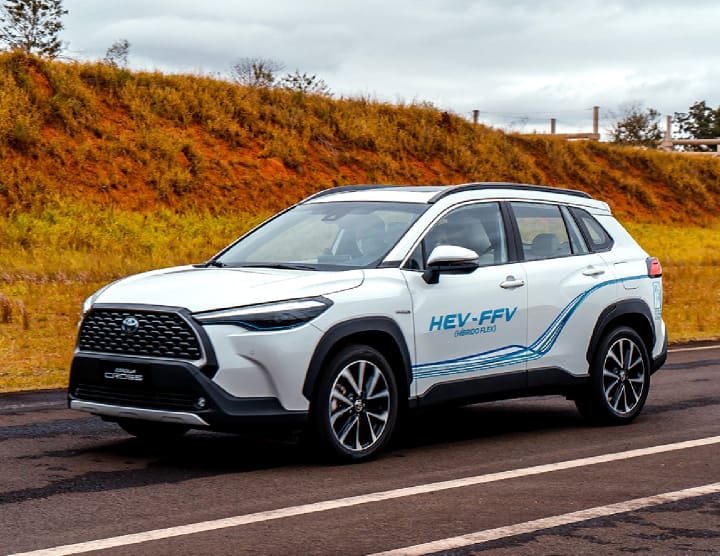
A flex-fuel hybrid vehicle by Toyota
At the April launch announcement, Toyota revealed that it will assemble the new model at its Sorocaba Plant in São Paulo; that it will make the engines at its Porto Feliz Plant, also in São Paulo; and that it will invest some 1.7 billion reais (about $340 million) in the project. The company revealed, too, that its plans call for putting the new model in showrooms in 2024 and that it will export the model—whose name it has not disclosed—from Brazil and market it in 22 Latin American nations.
“Toyota believes in the Brazilian market,” Toyota do Brasil president Rafael Chang at the launch announcement, “and continues to invest in technology and innovation to meet consumer needs here. It is a sustainable solution that also creates jobs and economic development.”

